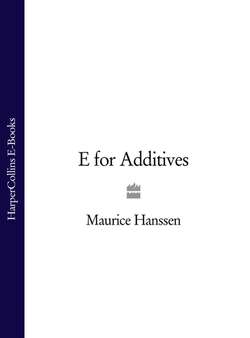Читать книгу E for Additives - Maurice Hanssen - Страница 13
What is an Additive?
ОглавлениеAccording to the Codex Alimentarius, a food additive is: ‘Any substance not normally consumed as a food by itself and not normally used as a typical ingredient of food, whether or not it has nutritive value, the intentional addition of which to food for a technological (including organoleptic) purpose in the manufacture, processing, preparation, treatment, packing, packaging, transport or holding of such food results in, or may be reasonably expected to result (directly or indirectly) in it or its by-products becoming a component of or otherwise affecting the characteristics of such. The term does not include “contaminants” or substances added to food for maintaining or improving nutritional qualities.’ (‘Organoleptic’ means sight, taste, smell and texture as perceived by the senses.)
Because manufacturers can use either the E number or the proper name of the additive as an alternative, they often choose to use the name on the premise that it is less ‘frightening’ than the E number. On the other hand, some ingredients which have valuable nutritional properties can cause confusion because they have names that look very much like additives, whereas in fact they are not in that class.
A good example is soya protein isolate, which is the valuable protein part of the soya bean in a very pure state and is an extraordinarily good source of very nutritious protein. It can make meat products in particular, such as sausages and pies, as well as a number of other dishes and drinks, more nutritious than they would be without it, and also has useful technical properties in giving the product a better appearance and texture.
Again, if you use an egg yolk because of the emulsifying properties of its natural lecithin then it is declared as the ingredient ‘egg-yolk’ and not as ‘E322’, lecithin.
